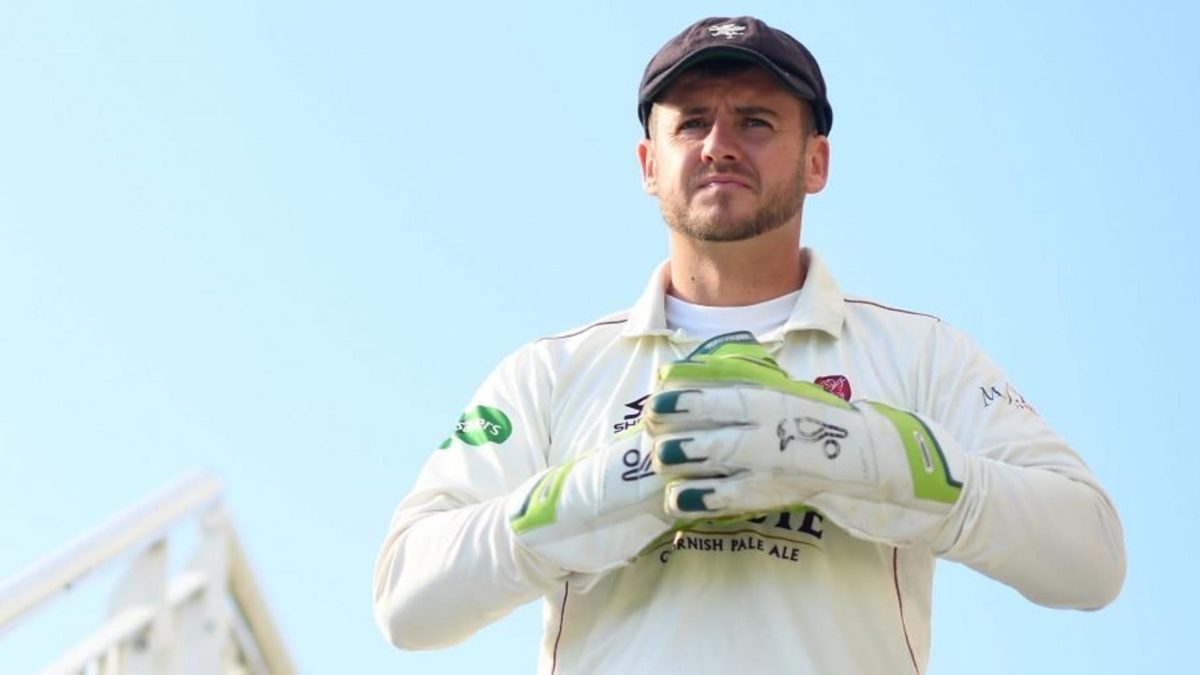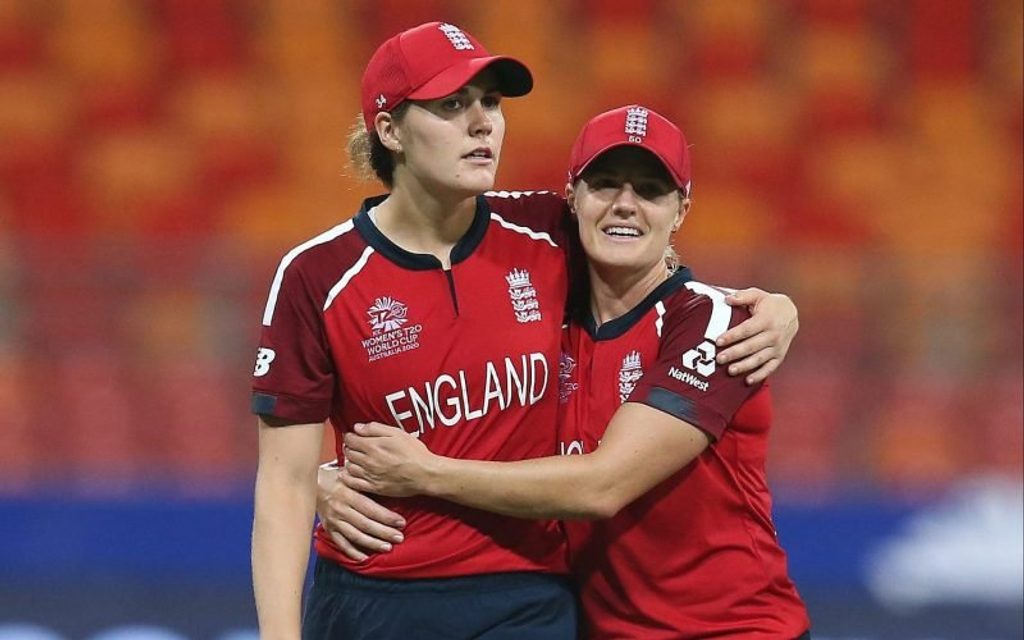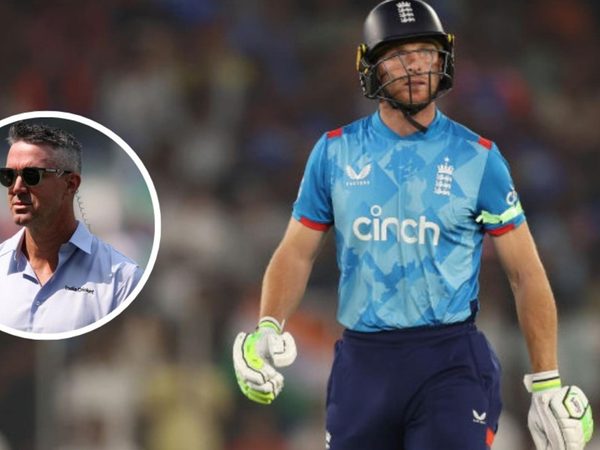
As part of Wisden Cricket Monthly’s series on cricket’s diversity problem, Tanya Aldred consideres why the number of openly gay male professional cricketers in England still stands at one, and looked to the women’s game for a more accepting environment.
This article was first published in issue 38 of Wisden Cricket Monthly. Read more from WCM’s cricket’s diversity crisis series here
First published in issue 38 of Wisden Cricket Monthly
The long reach of Covid’s cruel fingers means that next year’s Sydney Gay Pride will shuffle and shimmer away from its familiar location on Oxford Street. Its home for 2021? The Sydney Cricket Ground, that beautiful old green-roofed girl, home of Don Bradman’s highest first-class score, Steve Waugh’s scrambled 29th Test century and, since August, the Sydney Sixers LGBT fan group, formed to work with the club on inclusion issues.
Meanwhile, across large parts of the cricketing world, homosexuality is illegal. In Antigua and Barbuda, Barbados, Dominica, Afghanistan and Sri Lanka, while male homosexuality is prohibited in Grenada, Guyana, Jamaica, St Kitts and Nevis, St Lucia, St Vincent and the Grenadines, Zimbabwe, Bangladesh and Pakistan. Not forgetting Pakistan’s home from home in recent years and the hosts of this year’s IPL, the UAE, where the maximum penalty for homosexuality is death, as it is in Pakistan.
That the game can swing so far between acceptance and condemnation is no real surprise. Cricket has always mirrored the society, the diverse societies, where it exists. Chuck a knuckle ball of hyper-masculinity into the mix, an intense team environment and, traditionally, largely male commentary and spectators, and you create a place where it is difficult to be different, let alone gay. All that is reflected in the fact that only one male international cricketer, Steven Davies, has ever come out while still playing.
Yet the rise and rise of the women’s game has shown that there is another path. The engagement of England’s Katherine Brunt and Nat Sciver, a relationship that began on the dressing-room balcony at Lord’s as the sun set on England’s World Cup win in 2017, was greeted with widespread happiness, but they weren’t the first cricketing couple in a branch of the game that has long quietly accepted same-sex relationships. Just in recent years, South Africa’s Marizanne Kapp and Dane van Niekerk and New Zealand’s Amy Satterthwaite and Lea Tahuhu have married, while Australians Elyse Villani and Nicola Carey and Rachael Haynes and Leah Poulton pose happily together on the red carpet.
But, for gay cricketers of either sex, the path to acceptance is strewn with hazards.
 Teammates in love: England’s Natalie Sciver and Katherine Brunt are engaged
Teammates in love: England’s Natalie Sciver and Katherine Brunt are engaged
***
“There’s nothing wrong with being gay”
When Joe Root pulled West Indian fast bowler Shannon Gabriel up for homophobic language during the St Lucia Test in 2019, it felt like a watershed moment for Christopher Sherwood, a member of the Graces CC – the world’s first gay cricket club. “It felt very important as a perfect example of how to respond to casual homophobia and a great example of role modelling, as historically people may have feared speaking out as they could be perceived as potentially homosexual. It wasn’t for show and that’s where the power of it lay. What it did is empower other straight men to stand up for homosexual men. It is a huge cultural shift and it takes time to change perceptions, but it all adds up to making it easier for us.”
Gabriel was fined 75 per cent of his match fee and given three demerit points for “personal abuse of a player”, which ultimately led to him being banned for four ODIs because of his previous disciplinary record. He was sanctioned under the player code of conduct but, later in 2019, the ICC pulled all its anti-discrimination legislation into one anti-discrimination code which specifically prohibits a wide range of behaviour, including homophobia. And as international cricket is governed by English law, any abuse because of sexual orientation on the pitch falls under this stricture, whatever the local norms.
Those differences in attitude from country to country are something that the England women’s team have discussed. Lauren Winfield-Hill, who married her girlfriend Courtney (a former professional cricketer and now captain of rugby league team Leeds Rhinos) in March, remembers being hyper-vigilant on tour.
“We’ve been in those countries and had partners come out and we’re on red alert. We wouldn’t hold hands in the street or in the stands. We’re not the most PDA [public displays of affection] group, and we’re careful not to offend. We’re tight as tight with England. It’s our safe place, we’re completely ourselves, we speak at a deeper level. Cricket always felt like my people, we’re all cut from a similar cloth… We’re not all gay but we’re continually on a quest to understand each other, taking the time to understand difference.”
***
People sometimes ask Christopher Sherwood why, in the 21st century, there is the need for a gay cricket club in the UK. “Irrespective of legal equality, there is social inequality,” he says. “There are long held stereotypes against gay men in society and we are there to change perceptions.
“A few years ago we did a Facebook advert to try and raise awareness. Facebook advertising can be very specific and we targeted those who had shown an interest in cricket and homosexuality, and we got a whole lot of comments that were expressly homophobic:
‘WTF is going on in this world.’
‘If this is progress the human race is well and truly doomed .’
‘Imagine their run-up!’
“People were tagging friends with laughing faces and messages like: ‘I think this is good for you mate.’ Getting to elite-level sport is not easy; being gay and feeling like an outsider might make that much more difficult. Growing up in sport is very different to, for example, growing up in theatre. Generally you are in it before you are sexually aware, and it is much harder to be like that in a hyper-masculine world.”
New mums Lea Tahuhu and Amy Satterthwaite with their bundle of joy, Grace 😍
📸 Photo credit: @LTahuhu pic.twitter.com/UEvEzS4gpd
— ICC (@ICC) January 29, 2020
Progress since England and Australia buckled some gnarly leather to their legs in the first Test of 1877 has been glacial yet, infinitesimally, the world does change. In 2010, James Anderson posed naked in Attitude magazine, following in the bare feet of Vinnie Jones, David Beckham, Ben Cohen, Freddie Ljungberg and Gareth Thomas.
In February 2011, Steven Davies, of England and Surrey (now Somerset), revealed that he was gay in an interview with the Daily Telegraph. Davies, then 24, had come out to his family five years earlier, and his teammates before the 2010/11 Ashes tour.
He received hundreds of letters of support, telling the Mail in 2013: “They said seeing me do it had given them strength to do it and they were so much happier. It made it 100 per cent worthwhile. It’s nice to think that it’s changed someone’s life.” Vikram Solanki, then the chairman of the Professional Cricketers’ Association, said: “Steve has the full support of all his colleagues in cricket. Many of those he plays with and against have known about this for some time and none of them regard it as anything other than an entirely personal matter.”
But Davies’ announcement didn’t result in an avalanche of male cricketers coming out. (Previous to him there was Alan Hansford, who played for Sussex between 1989 and 1992, and who revealed he was gay deep into retirement, and George Cecil Ives, who played one match for MCC in 1902, had a fling with Lord Alfred Douglas, and worked to reform the law for gay people.)
The closest approximation came in April 2019 during a surreal and unfortunate incident when Australian all-rounder James Faulkner posted a picture with his flatmate, tagging it as “dinner with the boyfriend”. After the photograph went viral, he had to clarify that they were just friends. The original post had brought love from Australian internationals, like Shaun Tait, who said: “Great courage mate, bet u feel better.” But it also brought an avalanche of terrible homophobia. Anyone considering coming out might well have had a quick glance at the comments section and thought better of it.
Henry Cowen, an ECB media manager who works largely in women’s cricket, and who is himself gay, can understand any reluctance. “If a big-name gay player who had an IPL contract came out, I don’t think it would affect their career and earnings, but I’m sure it would remain an incredibly difficult thing to do. Coming out continually remains a challenge, it never gets easier. And with sports, if you are the first you become a cheerleader and many people wouldn’t want to be a de facto leader – it’s not for everyone.
“To be an England cricketer is in itself very impressive and it’s not beholden to him to be a vocal spokesperson. There is something very nice that we have an openly gay men’s player in county cricket and it doesn’t have to be what defines him as a person, just as being straight doesn’t define other people. If he was a footballer, he would have had more attention on him. I think it speaks well of cricket’s laidbackness that it is almost forgotten how brave Steven Davies was in coming out.”
As was Australian swing bowler Megan Schutt, who used her platform to fight for same-sex marriage as her country tore at itself over the issue in 2017. She suffered awful abuse for her stance including being called a paedophile and “worse than an animal”. Unsurprisingly, she was irritated when, within a few months of Christmas 2019, Marcus Stoinis and James Pattinson were both sanctioned for homophobic slurs.
“I think it’s important to talk about it,” Schutt said at the time. “I wasn’t angry as much as I was disappointed, which is such a dad thing to say. It’s disappointing that we still use that language, and I don’t believe that those boys actually are homophobic, I truly don’t. And they wouldn’t be saying it with that intent, but they’re still using the wrong words. Why can’t you just call someone a d***head?”
Everybody love everybody 🥳❣️ https://t.co/5Z3Yu6w2yF
— Megan Schutt (@megan_schutt) December 7, 2020
Why indeed? And it’s not just a question of language at the highest level. In 2017, a Culture, Media and Sport Committee report called for fans who display homophobic attitudes at sports matches to face immediate, lengthy bans on attending games. But many who have sat in a party stand during a T20 game where huge amounts of alcohol are sunk will have heard sexist, racist or homophobic chants. Stewarding, often carried out by students with little training or experience, can be ineffective, and relies on the unofficial stewardship of the crowd itself.
The Cricket Supporters’ Association, a not-for-profit organisation which represents fans from across society, is currently working on their ‘Every Cricket Fan’ initiative, to ensure that everyone can watch cricket safely. They are keen to hear about peoples’ experiences in cricket, from a fan’s perspective, to work out what the current landscape looks like. [Contact them at www.cricketsupporters.com if you would like to share your experience.]
In May 2015, the world’s first international study on homophobia in sport was published, based on results in the UK, the United States, Canada, Ireland, New Zealand and Australia. www.outonthefields.com found that 73 per cent of survey participants did not believe youth sports were a “supportive and safe” place for LGB participants.
“For young gay boys, sport can be a very scary area because it speaks to masculinity in a domain where being masculine and strong and brave is feted,” says Cowen. “It speaks to their fears and they can feel unwelcome. For young gay women, sport is probably more open but I’m sure it doesn’t come without its challenges, not least that – on a very basic level – we basically don’t teach girls that sport is for them.
“I think in general being gay has not been a problem for me in cricket, though in certain circles I am more wary of being myself. The culture is accepting and open, and it has certainly never been an issue at the ECB, though I am probably quite privileged in that – and it’s not a term I like or aspire to – I’m ‘straight acting’. I’m sure other people will have different stories to tell.”
Perhaps the last word should go to Lauren Winfield-Hill, who felt a weight lift when she got married and came out to the wider world. “I finally felt comfortable on the beach, opposite my wife, with all our people there who love us. I couldn’t be happier.”
To young girls out there in a similar situation, she has warm words: “As soon as you’ve accepted who you are, that is the most important thing. Like anything, don’t worry about the opinion of other people, it doesn’t matter, take that leap of faith and be yourself and you’ll be much happier. It took me 10 years, hopefully for young girls now it is not such a frightening prospect.”
Let’s grasp that hope – even if cricket, like the rest of society, has a long, long road to travel.








